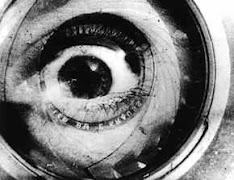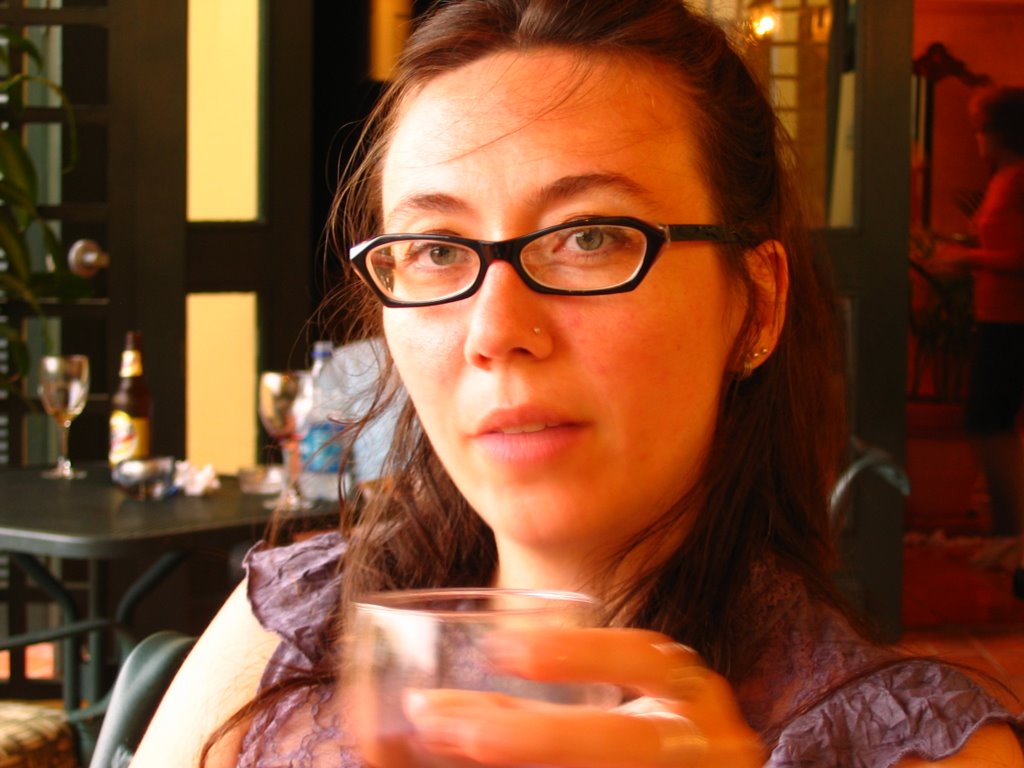JOURNAL SEVEN: DUE APRIL 03rd
DRAMA (chapter seven)
Discuss the spatial differences between theater and cinema and the implications of each. How is space used for dramatic impact in theater? How does this compare to its use in cinema? Select a play adapted to film as your example. How is dramatic space altered in the adaptation? Compare your example to this clip from Peter Greenaway's The Cook, the Thief, His Wife and Her Lover. How does Greenaway use dramatic space to tell a story?




10 comments:
In discussing the spatial differences between theater and cinema, I find that In theater the actor, stage, and action are engage in the present moment. In theater the stage welcome every illusion and the actor engages in the soul and voice of another being. On the other hand, cinema accommodates every form of reality. The film director and the theater director differ in the uses of time, space, and language. They both have a different approach to the elements of mise en scène. In the movie The Cook, the Thief, His Wife and Her Lover by Peter Greenaway we see an adaptation of a stage theater starting with a WS of the whole frame then slightly moving towards a CU of both characters then moving back to a WS of the whole composition where the director has try to accommodate a realistic theatrical stage look to keep the essence of the elements to composition; however, the cinematograpy adaptation does demonstrate its differences from a theatrical stage.
In discussing the spatial differences between theater and cinema, I find that In theater the actor, stage, and action are engage in the present moment. In theater the stage welcome every illusion and the actor engages in the soul and voice of another being. On the other hand, cinema accommodates every form of reality. The film director and the theater director differ in the uses of time, space, and language. They both have a different approach to the elements of mise en scène. In the movie The Cook, the Thief, His Wife and Her Lover by Peter Greenaway we see an adaptation of a stage theater starting with a WS of the whole frame then slightly moving towards a CU of both characters then moving back to a WS of the whole composition where the director has try to accommodate a realistic theatrical stage look to keep the essence of the elements to composition; however, the cinematograpy adaptation does demonstrate its differences from a theatrical stage.
In theater, the realistic element is not present for the style the theater uses is the Arc. This mean that whatever you see on the stage is what exist in that world. In cinema the realistic element is very much present. When dealing with the visual of cinema the style is a open window which give us more. If the screen show a person in the frame talking, we can get the impression that the person is talking to someone else in the room that we cant see in the frame, but the person is still there. With Theater, the same case would be different for what you see is what exist, the style is closed to the stage. The movie The Cook, the Thief, His Wife and Her Lover uses space very good. There is time when the director uses close up shot and then a wide shot of the room with the two character still talking, this give the impression of the room being bigger than it really is. the other thing that affect the space in the movie was the use of sound. The close up shot had no reverb on the character's voice but with the wide shot, there was reverb and echo delay on the characters' voices which made the room size larger. In theater, the voice of the character can't be altered to give the effect has if the room is larger for the stage is present for the viewers to kow that the actual size of the room is smaller.
There is of course a ws of the stage which gives you the illusion that you are in a kitchen. It seems realistic due to the decor and the placement of each item within the scene. That is theater, it is now what is happening, what you see and it is related to the title. To me the difference between theater and cinema is theater seams more real and current, likely to be happening, or what could happen. Cinema is more like add effects to what can happen or an elaborated extension to what should be or is. The space used for the dramatic effect, it can range between ws and cs emphases on each character or the more dramatic person doing the assigned scene. Greenaway uses space to the fullest to explain the dramatic aspect of the point that is being put across.(AD)
Amandeep,
Coming from my point of view what I would have to say about the spatial differences between theater and cinema and the implications of each is theater is more of something that can be personal as well as public. The reason why I say this is because in theater you can view a play for example something that I saw "Beauty and the Beast." In this play at one point I think it did become personal, not between me and characters but from own experience. What I'm basically is it is more real-like because you see it live and you can feel more. In Cinema it can also be personal as well as public but it is not as real as a play. In the cinema you will see shots that are already filmed and taken from all angles. From the clip The cook, the Thief, His Wife and Her Lover by Peter Greenaway's you can see that there is a lot of space that was used in this clip to give you an understanding of the story. Even when the shots weren't that close the way that Peter Greenaway used dramatic space to tell the story was by making the characters talk even though they were far away. The camera shot was so far away and then at one point it got close but not to close. There was also a lot of space between the lady and the man.
Theater and Cinema are different mainly because of the way space changes. In cinema, space can change, allowing us to become part of the story. This can alter our outlook on and understanding of the story. In theater, space does not change. Thus you are only watching a story. In general, the audience will be left with the same meaning and understanding at the end of the play.
In theater, space is flat and limited. By showing only one location at a time the audience only focuses on the events in that location. In cinema, space has depth and is relative. The director can choose to condense space, or travel from one space to another, while in theater, we are taken from one place to another. In cinema, if the director wishes to hide a particular space, he can simply change the camera angle or shot type. In theater however, hiding a space requires the director to darken the lights on that area, block it, or remove it from view.
In Madea Goes to Jail, by Tyler Perry, space is altered by killing the lights around Madea. This makes us ignore everything else and focus on her as she tells her story. In the cinematic version, this is done by a medium shot. A clip can be seen here. http://www.youtube.com/watch?v=LtdBMBsNZBY
In The Cook... dramatic space is made by centering and isolating the wife and the cook on the stage. In the cinematic adaptation, this is indicated by cutting from the wide shot of the kitchen to a medium shot of their private conversation.
The spatial differences between theater and cinema gives a different dramatic effect through movement and settings. In theater The director is forced to try to recreate a scene to try to give the viewers a sense of what reality is like and the space of the actors are very limited. The actors do not have much space to move around to give a dramatic effect through space but the setting can be exaggerated.The movie The cook, the thief, his wife and her lover is a good example of the characters not having free space to give a dramatic impact.Space is used to show how boxed in all the characters are as if they cannot escape each other. If this movie was done in cinema, the director would have been able to use a better realistic set that would have used drama through space and settings.
The spatial differences in both theatre and cinema, i feel depends on what ideas, emotions or perception of what is going on in the scene is supposed to evoke. In both categories there are standard ways to use space, which can be altered in man diffferent ways to set the mood of either a scene or expose the type of play or film it will be. In the movie "The Cook, The Theif, His wifeaand her Lover by, Peter Greenaway, he used space as a defining element to let the audience kknow the mood of every scene.
In the therar there is an immense amount of space created and one can watch how the large space effects the thought of the viewer may change, because of the space given to play with. Like "Media's family wedding" the movie and the play differ in dramatic ways. The sets on a film is created and seem real because of the limited amount of space except what is given in each scene. There is also a certain state of realization given when a film is watched, in a play a viewer had to emerge themselves in a scene and the spatial differences change the realization of a shot. In "The cook, the Thief, His Wife and Her Lover" by Peter Greenaway and changed the meaning of the film.
Post a Comment